Get Smart B4 U Get Sexy provides information on birth control options and pregnancy to help you stay informed and in-control.
Barrier Birth Control Methods
Spermicide
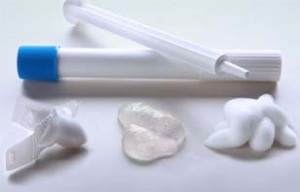
Here is a very inexpensive option. However, it is best to combine with other birth control options for super, duper, über protection! Spermicide come as creams, films, foams, gel and suppositories placed in the vagina.
Spermicide contains chemicals that stop sperm from moving, therefore keeping sperm from joining the egg.
If always used as directed, 15 out of 100 will become pregnant.
How To Use
Find a comfortable position and gently insert the spermicide into vagina. Wait 10 minutes before intercource. Make sure the spermicide is deep in the vagina. Insert more spermicide each time you have vaginal intercourse.
Side Effects
No protection for STI or HIV infection.
Can be messy.
Irritation to vagina or penis. If this is the case, consider changing the brand.
Note to Self
Easy to use, but not highly effective.
Can make you more susceptible to viruses if spermicide irrates sensitive skin.
Costs about $8 per package.
Diaphragm
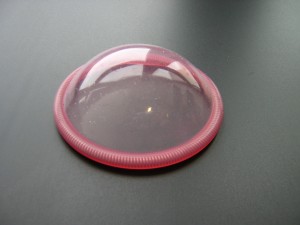
A Diaphragm is a shallow silicone cup inserted into the vagina. Similar to the cervical cap, it must be used with spermicide. It blocks the opening of the cervix and prevents sperm from entering. Once inserted it should stay in place for more than six hours.
Effectiveness **3 of 5
Out of 100 women who always use the diaphragm, between 6 to 16 will become pregnant.
How To Use
- Wash your hands.
- Check the diaphragm for any holes.
- Put 1 tsp of spermicide in the cup and around the rim.
- Find a comfortable position.
- Separate the lips of your vagina with one hand, and use the other hand to pinch the rim of the diaphragm and fold it in half.
- Put your index finger in the middle of the fold to get a good, firm grip.
- Push the diaphragm up and back into your vagina.
- Make sure to cover your cervix.
To REMOVE it:
- Wash your hands again. With your index finger, hook it over the top of the rim of the diaphragm and pull the diaphragm down and out.
- After you take it out, wash it with mild soap and warm water. Let it air dry. And use it again.
Side Effects
The Diaphragm will not protect against STI’s or HIV infections.
Some women develop vaginal irritation. This can be a sign of an allergy to the spermicide. If you have a mild reaction to spermicide, try switching brands to clear up the problem.
Serious but less likely side effects. Check with your healthcare provider if you: feel a burning sensation while urinating, are uncomfortable when the diaphragm is in place, feel irritation or itching in the genital area, have unusual discharge from the vagina. These symptoms may be a sign of infection or other condition.
Notes to Self
Does not protect against STI’s or HIV infections.
It is hormone free.
There come in latex or silicone. If you are allergic to latex, make sure to get the plastic silicone version.
Costs about $15–$75 and last up to 2 years.
Cervical Cap

FemCap – sounds like a new fashion style? The cervical cap is a silicone cap that is inserted into the vagina and cover the cervix. In the United States, there is only one cervical cap method available called Femcap. The cervical cap blocks the opening of the uterus.
The cervical cap is most effective for women that have not given birth.
Of 100 women who use the cervical cap always, 14 to 29 will become pregnant. To increase effectiveness use the cervical cap with a condom or pull out before ejaculation.
How to use
- Wash your hands.
- Put 1 tsp of spermicide on the dome and spread it all over the brim. Put another tsp of spermicide on the folded area between the brim and the dome.
- Find a comfortable position. With your middle finger, find your cervix, so you will know where it goes.
- Separate the lips of the vagina and slide the cervical cap dome-side down into the vagina, with the long brim entering first.
- Push down toward your anus, then up and onto your cervix. Make sure your cervix is totally covered.
To remove the cervical cap:
- With your finger get a hold of the removal strap, and rotate the cap.
- Push on the dome a bit with your finger to break the suction.
- Hook your finger under the strap and pull the cap out.
Side Effects
The Cap will not protect against STI’s or HIV infections.
Some women develop vaginal irritation. This can be a sign of an allergy to the spermicide. If you have a mild reaction to spermicide, try switching brands to clear up the problem.
Serious but less likely side effects.
Check with your healthcare provider if you:
- feel a burning sensation while urinating
- are uncomfortable when the cervical cap is in place
- feel irritation or itching in the genital area, have unusual discharge from the vagina.
These symptoms may be a sign of infection or other condition.
Note to Self
One Cervical Cap can last you up to two years. It cost on average from $60 to $75. Spermicidal jelly or cream costs about $8 to $17 a kit.
Female Condom

The Female Condom has all the benefits of the “male” condom but with a female powered attitude.
How to use
Female Condoms take a little practice
- Remove condom from packaging, careful not rip or damage condom.
- Put spermicide or lubricant on the outside of the closed end of the female condom
- Find a comfortable position: sit, stand, squat, place a leg on a chair, lie down, etc.
- Squeeze the sides of the inner ring of the closed side of the female condom
- Insert into the vagina as if it were a tampon
- Push the inner ring as far as it can go, until it reaches the cervix
- Pull your finger out and the outer ring should hang about an inch out of the vagina
You can use the same instructions for anal sex, as well
Side Effects
May cause irritation to vulva, penis, or anus
Dulled sensation
Penis may slip between female condom and vaginal wall
Note to Self
The female condom is the only female-initiated prevention product that provides simultaneous protection against STIs, including HIV, and unintended pregnancy.
DON’T USE FEMALE CONDOM AND MALE CONDOM AT SAME TIME. FRICTION CAUSES BREAKAGE.
Condom

No glove, no love! Wrap it up, before it gets rough! When you’re with your lover, use a rubber! Show you love her by using a rubber! You need a shield if you’re slaying a dragon! The Glove that is essential to many for love has been around for centuries Of course all of these slogans are about none other than the good, old condom. Unlike most other forms of birth control, condoms offer both protection against pregnancy and sexually transmitted diseases.
How to use
- Check to make sure the condom is not expired, brittle, open, or torn.
- Carefully remove from wrapper, being sure not to rip the condom.
- If not lubricated, place a few drops of lube on the inside of the condom. (The part that rolls down onto the penis)
- If uncircumcised, pull back the foreskin.
- Place the condom on the tip of the erect penis, with one hand pinch a half an inch of space to collect semen. With the other hand roll the condom down the shaft.
- Make sure there is no air trapped inside the condom, as this could cause breakage.
- Roll the condom down to the base of penis and lubricate the outside of the condom before engaging in intercourse.
Removing and Disposing a condom
- Carefully pull out while holding the base if of the condom to prevent any semenfrom spilling.
- Don’t spill the semen, hold the condom at the base when removing it from the vagina.
- Check to make sure it is not ripped. If its ripped, consider emergency contraception.
- Tie the end of the condom with a knot.
- Throw it in the trash – not in the toilet.
- Wash the penis with soap and water before further play.
ONLY USE ONE CONDOM AT A TIME
If condom breaks – sh*! happens. You still have options to prevent pregnancy. Consider emergency contraception immediately.
Different Methods to Using a Condom
- Can include condom placement during sex play
- Can be used for oral, vaginal, and anal sex
- Partner can place condom on other partner
- Flavored Condoms
- Latex vs. Silicone plastic
- Lambskin Condoms (Pregnancy protection only)
Side Effects
- Very few side effects. Almost everyone can use a condom safely.
- If you are allergic to latex, you can use a plastic silicone condom or a plastic female condom.
- Lambskin condoms can also be used, but they do not offer protection from STI’s.
Note to Self
- Using a condom correctly can take practice – so practice away 🙂
- Condoms are the most inexpensive option. Condoms can cost $1 and many times you can get them free.
- Finding proper sized condoms will make the experience safer and better for all parties involved.
- Lubricant can be used to enhance the sexual experience, however water-based lubricants are safest to female and male partners.
- Always be aware that certain lubricants are not safe to use with condoms.
Hormonal Birth Control Methods
Emergency Contraception aka Plan B

So that happened, and your birth control kind of, well, didn’t. Whether you notice that the condom tore or you forgot to take the Pill this morning, or you got caught up in the moment, EC is a great back up method. EC stops pregnancy before it starts.
EMERGENCY CONTRACEPTION (EC) can be taken up to 5 days (or 120 hours) after unprotected sex.
Plan B One-Step EC brand is available without age restrictions to women and men. That means that you do not need a prescription. Just go to your local pharmacy ( in most states) and get Plan B One-Step over-the-counter – no matter your age. If they do not carry it or you come up against some other unforseen question, visit http://eclocator.not-2-late.com/search.asp to find a retailer closest to you.
How to use
Levonogestrel pills, including the brands Plan B One-Step and Next Choice One Dose, are up to 89 percent effective when taken within 72 hours (three days) after unprotected sex and continue to provide protection up to 120 hours.
Another Brand, Ella, is 85 percent effective if taken within 120 hours (five days).
Pregnancy doesn’t happen right after sex. You can prevent pregnancy even after sex. It can take up to six days for the sperm and egg to meet after having sex. EC works by keeping a woman’s ovary from releasing an egg for longer than usual. Pregnancy cannot happen if there is no egg to join with sperm.
Take EC as soon as possible after unprotected sex. For EC to be most effective, take it up to 120 hours (five days) after unprotected intercourse.
Side Effects
There are no reports of serious side effects. Because EC is a hormonal form of birth control, possible side effects may include: an earlier or later, heavier or lighter period than usual, breast tenderness, dizziness, or headaches, and nausea or vomiting. If you vomit within two hours of taking the pill(s), it won’t be effective and you need to take it again.
Note to Self
You DO NOT need a prescription to get Plan B One Step EC. Costs vary from $30 to $65
Does not protect against STI or HIV.
The ParaGard IUD can also be used as emergency birth control, to prevent pregnancy after unprotected intercourse. It can reduce the risk of pregnancy by 99.9 percent if inserted within 120 hours (five days) after unprotected intercourse. Cost can run up to $900 for IUD insertion, however most health plans cover this form of birth control.
Spermicide

Here is a very inexpensive option. However, it is best to combine with other birth control options for super, duper, über protection! Spermicide come as creams, films, foams, gel and suppositories placed in the vagina.
Spermicide contains chemicals that stop sperm from moving, therefore keeping sperm from joining the egg.
If always used as directed, 15 out of 100 will become pregnant.
How To Use
Find a comfortable position and gently insert the spermicide into vagina. Wait 10 minutes before intercource. Make sure the spermicide is deep in the vagina. Insert more spermicide each time you have vaginal intercourse.
Side Effects
No protection for STI or HIV infection.
Can be messy.
Irritation to vagina or penis. If this is the case, consider changing the brand.
Note to Self
Easy to use, but not highly effective.
Can make you more susceptible to viruses if spermicide irrates sensitive skin.
Costs about $8 per package.
Implant

Sounds a little creepy at first, but imagine 3 years of continuous birth control.
Less than 1 out of 100 women a year will become pregnant using the implant.
There are some benefits to long-term birth control. The ability to get pregnant, if you desire, returns quickly once you stop using the implant. You can using while breastfeeding. If you can not take estrogen, this is a good option. You dont have to remember to take medicine every day.
How to Use
The implant is matchstick sized implant that is inserted into your arm. It last 3 years. It must be performed by a healthcare professional. The birth control implant releases a hormone – progestin- to prevent pregnancy. Progestin keeps eggs from leaving the ovaries – so no egg joins the sperm. It also makes the cervical mucus thicker, keeping sperm from getting to the eggs.
Side Effects
Like with any form of long-term birth control there are side effects. The most common is irregular bleeds, especially during the first -12 months. For most women, periods become fewer and lighter. After one year, 1 out of 3 women who use the birth control implant will stop having periods completely. Some women have longer, heavier periods. Some women have increased spotting and light bleeding between periods.
Less Common side effects: change in sex drive, discoloring or scarring of the skin over the implant, headache, rarely, an infection or pain in the arm, nausea, pain at the insertion site, sore breasts and weight gain.
Note to Self
The Implant can be removed at any time.
The cost of the exam, the implant, and insertion ranges from $400–$800. Removal costs between $100 and $300.
The Shot
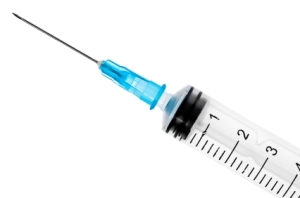
Depo Shot, aka, Depo-Provera aka the shot is an injection of a hormone – progestin- to prevent pregnancy. Progestin keeps eggs from leaving the ovaries – so no egg joins the sperm. It also makes the cervical mucus thicker, keeping sperm from getting to the eggs. Simply put it’s a shot that goes in your arm or butt cheek and it give you 3 months of pregnancy prevention!
The shot is very effective when used correctly. Remember you need to get a new shot every 12 weeks. If used always, the Shot is 99% effective.
How It Works
Visit your healthcare provider. They will administer the shot.
Side Effects
No protection against STI’s or HIV infections.
Irregular bleeding can occur, especially in the first 6 to 12 months of use.
Because this is a hormonal birth control option, your period may vary. For most women, periods become fewer and lighter. After one year, half of the women who use the birth control shot will stop having periods completely.
Some women have longer, heavier periods.
Some women have increased spotting and light bleeding between periods.
Less common side effects: change in sex drive, change in appetite or weight gain, depression, hair loss or increased hair on the face or body, headache, nausea, and sore breasts.
Note to Self
Because Depo is an injection, any side effects may persist until the shot wears off at 12-14 weeks.
Ask your your healthcare provider about calcium or Vitamin D to keep your bones healthy.
The Pill
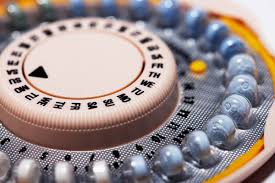
So the old classic form of birth control “The Pill. Been around for ages, but has gone through several changes to make it safer for women.
Is there just one pill, or are there different types? Are there any side effects? Did you know that the pill can do more than just prevent pregnancy?
The Pill is a medication to prevent pregnancy. The Pill contain hormones – either estrogen and progestin (combination) or just progestin – that you can take either every day for a 21 day period, with one week off (to have your period).
Depending on the type of pill, you should take the pill daily, at the same time each day, to ensure maximum protection.
With Progestin only pills, you may only get your period on the fourth week, stop getting your period, or have spot bleeding throughout the month.
How to Use
After just starting either the combination pill or the progestin only pill, you should use other birth control for the first week.
You can start either type of pill at anytime (except during pregnancy).
Side Effects
The pills do not protect against STI’s or HIV infection.
Common side effects: bleeding between periods (mostly progestin-only), tenderness in the breasts, nausea and vomiting, hormones may change a woman’s sex drive (libido). For some women, the hormones in pills can throw off your mood…if you’re noticing that you are not feeling yourself… think about talking to your provider about changing the hormonal amount or switching to another form of birth control.
Serious but less likely side effects: clotting, strokes, heart attacks, developing high blood pressure, liver tumors, gallstones, jaundice. Check with your physician about any health concerns.
The pill may not be as effective for women who have extra curves to love.
Note to Self
It’s important to use birth control consistently- everyday and at the same time. If you are using the pill, leave in a place you see everyday about the same time to make sure you take it on time. For example put it in the cabinet with your toothbrush or by your alarm clock/cell phone charger.
Cost about $15–$50 each month
There is little link between the pill and breast cancer, DON’T believe the rumors.
The Pill can be a private form of birth control.
Natural Contraception
Permanent Birth Control Methods
Vasectomy
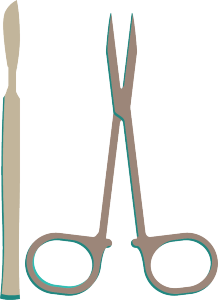
Right now, the only birth control exclusively for men. Snip Snip boys! Ok we just kidding… now there not even a snip needed…lucky you!
Effectiveness- Almost 100%
However, vasectomy is not effective immediately. There is still some sperm that remains beyond the blocked tubes. It usually takes about three months to clear all the sperm outside of the tubing. Until that time, you and your partner must use a back form of birth control.
So I know we said almost, in vary rare cases the tubes can grow back together again and pregnancy can occur (shots are reloaded). This happens in about 1 out of 1,000 cases.
How it Works
A health care provider closes or blocks the tubes that carry sperm. It’s usually a very short procedure done in an out patient clinic/doctor office. Vasectomy blocks each vas deferens ( the vesicles sperm travel through) and keeps sperm out of the seminal fluid. The sperm are absorbed by the body instead of being ejaculated. Essential shooting blanks. They are two types of procedures
INCISION METHODS
Usually, a local anesthetic is injected into the pelvic area. Then, the doctor makes an incision on each side of the scrotum to reach each vas deferens — the tubes that carry sperm. Sometimes a single incision is made in the center. Each tube is blocked. In most procedures, a small section of each tube is removed. Tubes may be tied off or blocked with surgical clips. Or, they may be closed using an instrument with an electrical current.
NO-INCISION METHOD
With the no-incision (“no-scalpel”) method, the skin of the scrotum is not cut. One tiny puncture is made to reach both tubes. The tubes are then tied off, cauterized, or blocked. The tiny puncture heals quickly. No stitches are needed, and no scarring takes place.
The no-scalpel method reduces bleeding and decreases the possibility of infection, bruising, and other complications.
Major complications with vasectomy are rare and are usually caused by infection.
Complication rates for vasectomy are generally lower for the no-incision method than for methods that include cutting the skin.
Side Effects
After you’ve had a vasectomy, look for signs of infection high fevers, blood or pus around the incision area or excessive pain. Other side effects include:
- Bruising, which usually clears up on its own
- Hematomas — swellings that contain blood. They usually clear up by themselves, or with bed rest or ice packs. In rare cases, they need to be drained by a health care provider.
- Hydroceles — swellings that contain fluid and tenderness near the testicles. They usually clear up in about a week. Applying heat and wearing an athletic supporter can help. In rare cases, they need to be drained with by a health care provider.
- Granuloma — sperm that leaks from the tubes and causes a small lump under the skin near the site of the surgery. This usually clears up by itself. Surgical treatment is sometimes required.
- Pain or discomfort in the testicles. This is usually temporary, but in about 2 out of 100 cases the pain may be chronic and severe. Most of the time, pain is relieved by taking anti-inflammatory drugs or other medications. Very rarely, an injection called a spermatic cord block can be used to deaden the pain temporarily. Vasectomy reversal is very rarely needed to relieve pain permanently.
- Decreased sexual desire or an inability to have an erection occurs in 4 out of 1,000 cases. The most likely cause is emotional — yes boys we are saying that it’s likely in your head, because there is no physical cause for sexual dysfunction associated with vasectomy.
Note to Self
Vasectomy does not change your hormones or masculinity. And it will not affect your ability to get and stay erect. It also will not affect your sex organs, sexuality, and sexual pleasure. No glands or organs are removed or altered. Your hormones and sperm continue being produced. Your ejaculate will look just like it always did. And there will be about the same amount as before. Nationwide, the cost of a vasectomy ranges from $350–$1,000, including the follow-up sperm count.
Sterilization
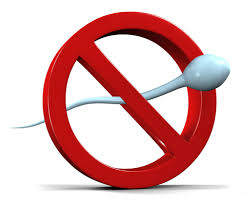
Isn’t that what doctors do before surgery? Doesn’t that last forever? Wait, it can be undone?
Sterilization is nearly 100% effective.
.03% of women who use an Essure (insert) will get pregnant
.05% of women who use traditional incision methods will get pregnant.
How To Use
Commonly referred to as “getting your tubes tied”. There are several methods of sterilization. Sterilization prevents an egg produced in the ovaries from traveling through the fallopian tubes towards the uterus, where it can be fertilized by sperm.
There are multiple ways to perform a sterilization: cutting and cauterizing the fallopian tubes; closing the tubes with clips, clamps or rings; or the most effective – tiny inserts that are placed into each tube. Tissue then grows around the inserts and blocking eggs from flowing. Another option is to remove the entire uterus.
However, it is done — sterilization will prevent sperm from reaching the egg.
Side Effects
Does not protect against STI’s or HIV infections.
If the insert is not placed correctly the first time, other procedures may be necessary to ensure safety
Rarely, complications like changes in menstrual cycle, infection, and pelvic or back pain may occur
Note to Self
Sterilization is meant to be permanent and reversals can be dangerous (for women), very hard to do and expensive.
Vasectomy

Right now, the only birth control exclusively for men. Snip Snip boys! Ok we just kidding… now there not even a snip needed…lucky you!
Effectiveness- Almost 100%
However, vasectomy is not effective immediately. There is still some sperm that remains beyond the blocked tubes. It usually takes about three months to clear all the sperm outside of the tubing. Until that time, you and your partner must use a back form of birth control.
So I know we said almost, in vary rare cases the tubes can grow back together again and pregnancy can occur (shots are reloaded). This happens in about 1 out of 1,000 cases.
How it Works
A health care provider closes or blocks the tubes that carry sperm. It’s usually a very short procedure done in an out patient clinic/doctor office. Vasectomy blocks each vas deferens ( the vesicles sperm travel through) and keeps sperm out of the seminal fluid. The sperm are absorbed by the body instead of being ejaculated. Essential shooting blanks. They are two types of procedures
INCISION METHODS
Usually, a local anesthetic is injected into the pelvic area. Then, the doctor makes an incision on each side of the scrotum to reach each vas deferens — the tubes that carry sperm. Sometimes a single incision is made in the center. Each tube is blocked. In most procedures, a small section of each tube is removed. Tubes may be tied off or blocked with surgical clips. Or, they may be closed using an instrument with an electrical current.
NO-INCISION METHOD
With the no-incision (“no-scalpel”) method, the skin of the scrotum is not cut. One tiny puncture is made to reach both tubes. The tubes are then tied off, cauterized, or blocked. The tiny puncture heals quickly. No stitches are needed, and no scarring takes place.
The no-scalpel method reduces bleeding and decreases the possibility of infection, bruising, and other complications.
Major complications with vasectomy are rare and are usually caused by infection.
Complication rates for vasectomy are generally lower for the no-incision method than for methods that include cutting the skin.
Side Effects
After you’ve had a vasectomy, look for signs of infection high fevers, blood or pus around the incision area or excessive pain. Other side effects include:
- Bruising, which usually clears up on its own
- Hematomas — swellings that contain blood. They usually clear up by themselves, or with bed rest or ice packs. In rare cases, they need to be drained by a health care provider.
- Hydroceles — swellings that contain fluid and tenderness near the testicles. They usually clear up in about a week. Applying heat and wearing an athletic supporter can help. In rare cases, they need to be drained with by a health care provider.
- Granuloma — sperm that leaks from the tubes and causes a small lump under the skin near the site of the surgery. This usually clears up by itself. Surgical treatment is sometimes required.
- Pain or discomfort in the testicles. This is usually temporary, but in about 2 out of 100 cases the pain may be chronic and severe. Most of the time, pain is relieved by taking anti-inflammatory drugs or other medications. Very rarely, an injection called a spermatic cord block can be used to deaden the pain temporarily. Vasectomy reversal is very rarely needed to relieve pain permanently.
- Decreased sexual desire or an inability to have an erection occurs in 4 out of 1,000 cases. The most likely cause is emotional — yes boys we are saying that it’s likely in your head, because there is no physical cause for sexual dysfunction associated with vasectomy.
Note to Self
Vasectomy does not change your hormones or masculinity. And it will not affect your ability to get and stay erect. It also will not affect your sex organs, sexuality, and sexual pleasure. No glands or organs are removed or altered. Your hormones and sperm continue being produced. Your ejaculate will look just like it always did. And there will be about the same amount as before. Nationwide, the cost of a vasectomy ranges from $350–$1,000, including the follow-up sperm count.
Sterilization

Isn’t that what doctors do before surgery? Doesn’t that last forever? Wait, it can be undone?
Sterilization is nearly 100% effective.
.03% of women who use an Essure (insert) will get pregnant
.05% of women who use traditional incision methods will get pregnant.
How To Use
Commonly referred to as “getting your tubes tied”. There are several methods of sterilization. Sterilization prevents an egg produced in the ovaries from traveling through the fallopian tubes towards the uterus, where it can be fertilized by sperm.
There are multiple ways to perform a sterilization: cutting and cauterizing the fallopian tubes; closing the tubes with clips, clamps or rings; or the most effective – tiny inserts that are placed into each tube. Tissue then grows around the inserts and blocking eggs from flowing. Another option is to remove the entire uterus.
However, it is done — sterilization will prevent sperm from reaching the egg.
Side Effects
Does not protect against STI’s or HIV infections.
If the insert is not placed correctly the first time, other procedures may be necessary to ensure safety
Rarely, complications like changes in menstrual cycle, infection, and pelvic or back pain may occur
Note to Self
Sterilization is meant to be permanent and reversals can be dangerous (for women), very hard to do and expensive.
